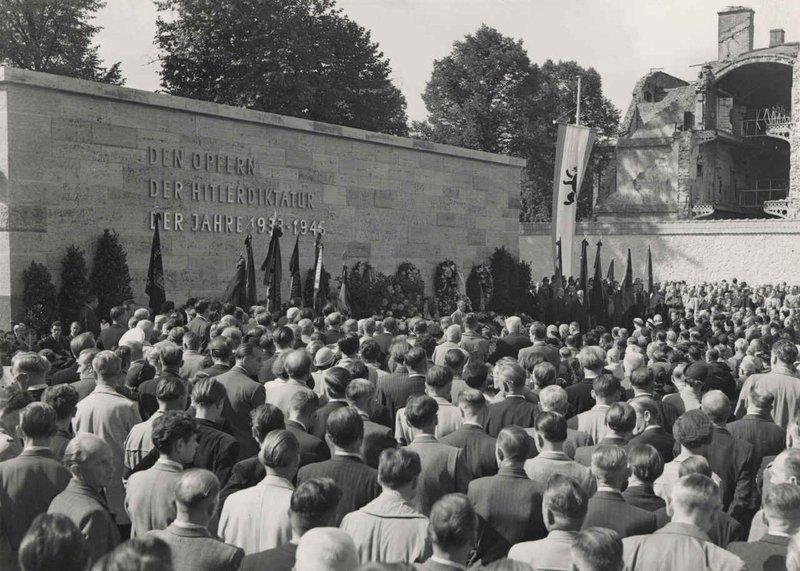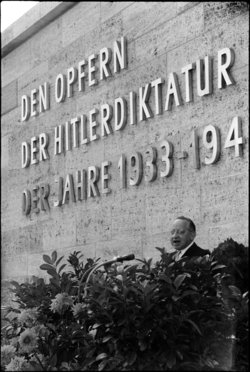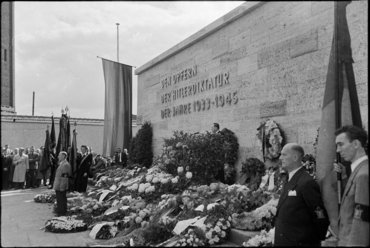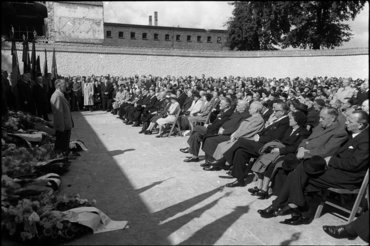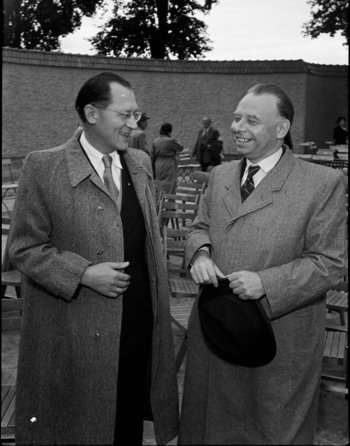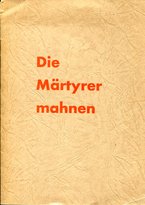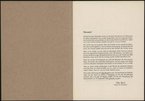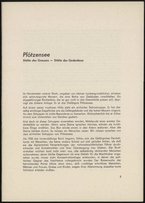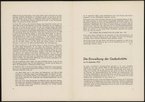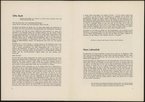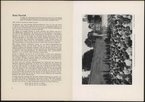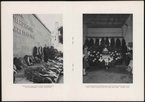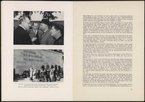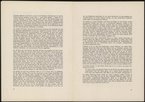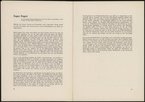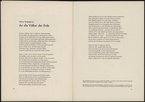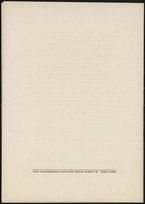The memorial center’s inauguration
Plötzensee Memorial Center’s official opening took place at a time of prolonged discussion evaluating the resistance against National Socialism. Accusations of treason were widespread in parts of West German society and politics. Many former victims of Nazi persecution and their surviving relatives were still waiting for social support and recognition. Almost 1,500 Berliners attended the dedication ceremony on September 14, 1952, including numerous survivors of National Socialist persecution.
The inauguration was held on the second Sunday in September, the Day of Victims of National Socialism. The Cold War continued to show its presence, with a mass rally taking place at the same time on East Berlin’s Thälmannplatz under the title: “Against fascism and war - for peace, unity, democracy, and socialism.”
The event in Plötzensee was planned by the senator for social affairs, who also sent out invitations. At the beginning of the inauguration ceremony, Senator Otto Bach conveyed a short welcome address from the absent governing mayor of West Berlin, Ernst Reuter. The commemorative wall with the bronze dedication “To the victims of the Hitler dictatorship from 1933 to 1945” is visible behind him, referring to all victims of National Socialist persecution.
We honor here the more than 2,000 victims of a witless and heartless tyranny executed in this place. With them, we honor also the millions of victims who suffered pain, torment, and death at other execution sites or in the extermination and concentration camps in Germany and in all parts of Europe, for their struggle for humanity, freedom, and democracy.
Otto Bach, speech for the inauguration of Plötzensee Memorial Center, September 14, 1952.
The first photo shows the journalist and chairman of the Europa-Union Eugen Kogon, who was imprisoned in Buchenwald concentration camp for six years under National Socialism. He spoke at the ceremony as a former member of the German resistance. On the far right of the picture are flag-bearers wearing armbands of the Berlin Freedom League.
The second photo depicts the memorial center courtyard with the invited guests. Minister Hans Lukaschek spoke as a representative of the federal government. Also present from Bonn was Heinrich Vockel, the first authorized representative of the federal government in Berlin. Members of the senate and the political parties also attended the ceremony, including Mayor Walther Schreiber and the banking senator Paul Hertz.
Honoring the resistance
The speeches at the former execution site emphasized Plötzensee’s character as an international place of remembrance. The main speakers Eugen Kogon and Koos Vorrink called for greater social acceptance in Germany for the resistance fighters’ work and invoked their international cohesion in the Western democracies.
Eugen Kogon and Koos Vorrink, the chairman of the Dutch Social Democratic Party, knew each other from their work in organizations for victims of Nazi persecution. Vorrink was a prisoner in Sachsenhausen concentration camp from 1944 to 1945. He spoke at the ceremony as a representative of the international resistance movement.
Publication on the memorial center’s inauguration
After the opening of Plötzensee Memorial Center, the senator for social affairs published a brochure entitled “The Martyrs Admonish.” This publication contained the speeches and selected photos of the inauguration ceremony, among other content.

